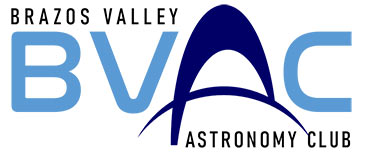

By Warren Bracewell
I bought my Celestron Edge HD 1100 around Christmas of 2018. I love the scope, but it was always a hassle to put together, level, connect all of the equipment and wiring, and then polar align. It was also a hassle to tear everything back apart and put back into the boxes once done. That is when I started thinking about getting a dolly.
I looked on line for dollies and they were either cheap or expensive. My scope weighs around 150 pounds when put together, so cheap wasn’t an option, and I'm cheap so expensive wasn’t either.
I am, however, pretty good with wood, so I started thinking about building my own. Looking at Cloudy Nights and seeing what others had done gave me some ideas. I wanted it stable, yet easily operable with a place to put my power box so that everything could stay assembled and just be rolled outside when needed.
Here is what I came up with and built, and it works better than I expected.

Here are all of the parts, except the wheels and handle, ready for assembly.

I needed the outriggers to be square at exactly 120 degrees apart. I cut the inside angles so, when pushed together, it would all line up. I left the boards longer than needed till I could figured out where the tripod and wheels would go.

I wanted something that would eliminate side to side movement of the outriggers, so I came up with the delta brace. These were screwed to the outriggers. I placed these on ¾” plywood and traced two patterns for the longitudinal supports.

I wanted the wheels to be outside of the tripod legs for added stability, but I didn’t want them too far and make it cumbersome.

I needed to measure how far up and down that I would be adjusting the tripod so that I could cut the groove for it to go into and so that I would know exactly how far out the wheels needed to go. It was after this that I shortened the outriggers and rounded the ends.

I have now started assembling the parts. You can see that I cut the grooves for the tripod. The delta brace was screwed to the outriggers first, then the plywood was screwed to the outriggers on the bottom and the delta brace on the top. This made it incredibly stable. I tested it by supporting the ends on blocks and standing and jumping on it.

I have now everything assembled but the wheels and handle. I stained and varnished the whole thing and drilled holes for the wheels

I bought locking wheels that not only would lock the roll, but would also lock the turn. These were 4” polycarbonate wheels that came 4 to a pack. I removed the wheel from the fourth one, turned it upside down and mounted it with one of the other wheels to use with a handle. I made the handle out of ¾” galvanized pipe, a tee and caps.

Fit test to see where the best position is.

Now to decide where to set it up.

This turned out better than I hoped. I painted marks on my driveway where I wanted the scope to sit with the wheels turned pointing out. When I put the dolly on these marks, it is a pretty good alignment. For visual, nothing else has to be done. I still need to polar align to do any long exposure photography, but it is usually pretty close.
If you look at the power box, that is one that Randy Light designed and Lee Smith and I built. That will be another post.

About the Author:
Warren Bracewell is an amateur stargazer and community volunteer. He is past president of the Brazos Valley Astronomy Club.
Contact Mr. Bracewell: contact@brazosvalleyastronomyclub.org

Summer 2023 Newsletter